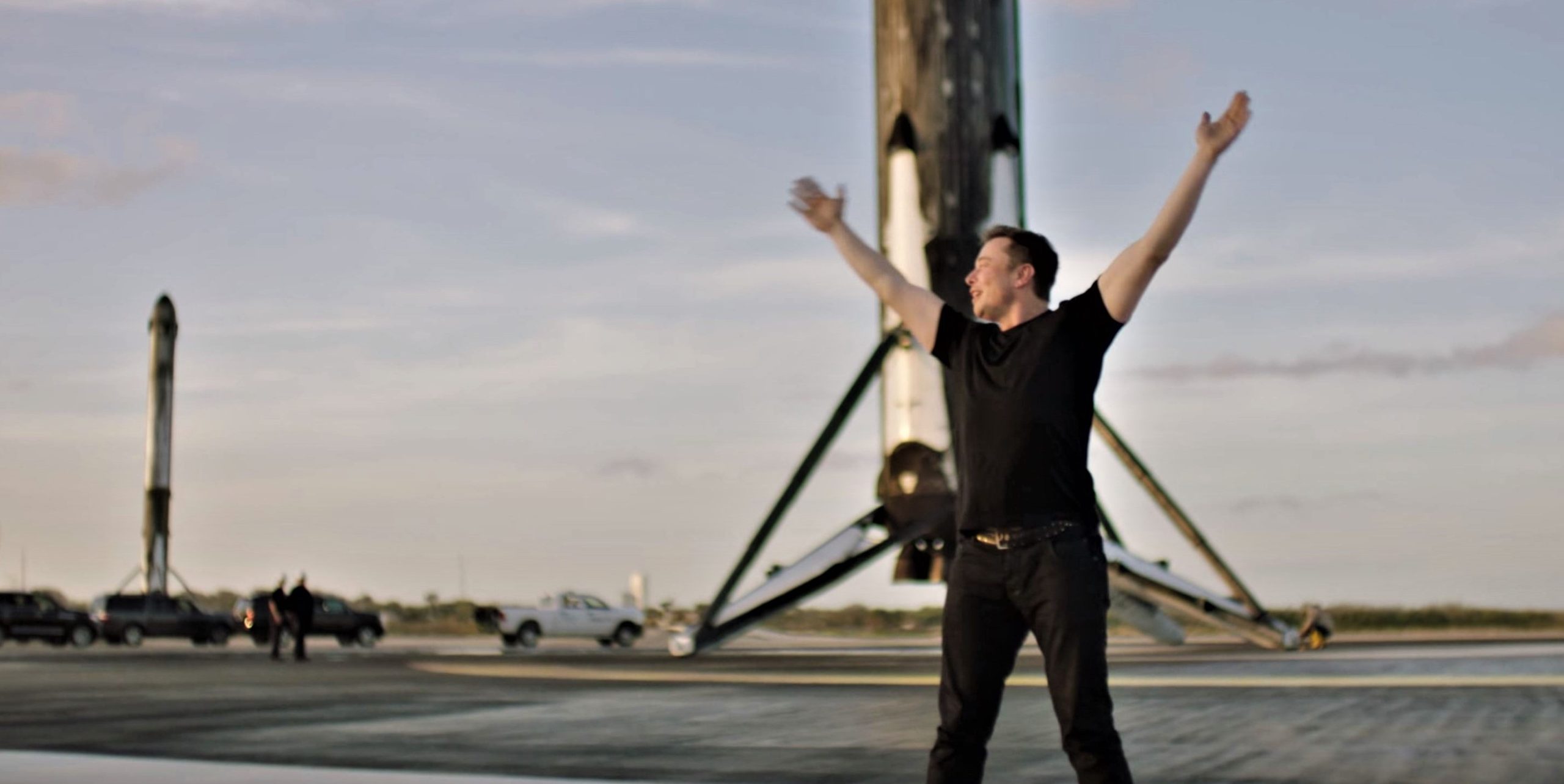
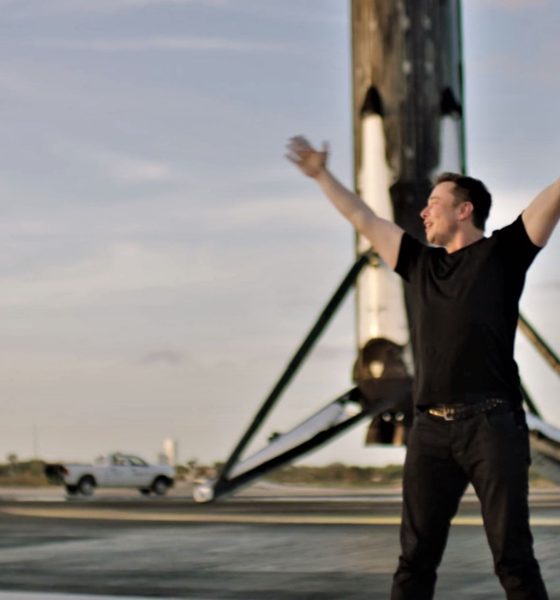
News
SpaceX’s Elon Musk set for Starlink launch, Tesla earnings double-header
SpaceX has delayed its latest Starlink launch once more after high winds forced the company to recycle an attempt originally planned for January 27th, setting up SpaceX’s Elon Musk for a Starlink launch and Tesla earnings report on the same day.
Flight-proven Falcon 9 booster B1051 is currently vertical at Cape Canaveral Air Force Station (CCAFS) Launch Complex 40 (LC-40) and has been for more than a week. Perched atop an expendable upper stage attached to the top of the booster, SpaceX’s third batch of 60 upgraded Starlink v1.0 satellites are loaded inside the rocket’s airtight payload fairing, patiently awaiting a launch that’s now been delayed a full 9 days by winter weather both in Cape Canaveral and off the Florida coast.
Most recently, bad sea conditions in the Atlantic Ocean forced SpaceX to delay Starlink V1 L3 an extra 24 hours from a January 28th backup window and the batch of communications satellites are now scheduled to launch no earlier than (NET) 9:09 am EST (14:09 UTC), January 29th. Set to unequivocally reaffirm SpaceX’s position as the owner of the world’s largest private satellite constellation, the mission – should it be a success – will mean that the company has launched its 240th flat-packed Starlink satellite. Additionally, Starlink L3 should feature a number of exciting Falcon 9 recovery events, potentially setting up more than 75% of the rocket’s value for reuse.
Earlier this morning, Teslarati’s own Simon Alvarez offered a glimpse of what to expect from Tesla’s Q4 2019 earnings report, scheduled for 3:30 PM PST (23:30 UTC), January 29th. In short, it looks like Tesla’s highly-anticipated Model Y crossover could find its way to customers much sooner than expected, while additional signs point to another strong quarterly performance that could send the company’s already meteoric stock even higher. As always, CEO Elon Musk is expected to be front and center on the teleconference, which is set to occur just nine hours after SpaceX’s latest 60-satellite Starlink launch.
For SpaceX, the new year has gotten off to a busy start, although Florida’s winter weather has done its best to hamper launch attempts. Beginning with the second launch of Starlink v1.0 satellites (Starlink V1 L2) on January 7th, that Falcon 9 mission was delayed from January 3rd by high seas in the Atlantic Ocean that would have made the booster’s planned drone ship landing extremely risky. In high seas, drone ship decks pitch and buck, creating major uncertainty as Falcon 9 is unable to account for the deck movement.
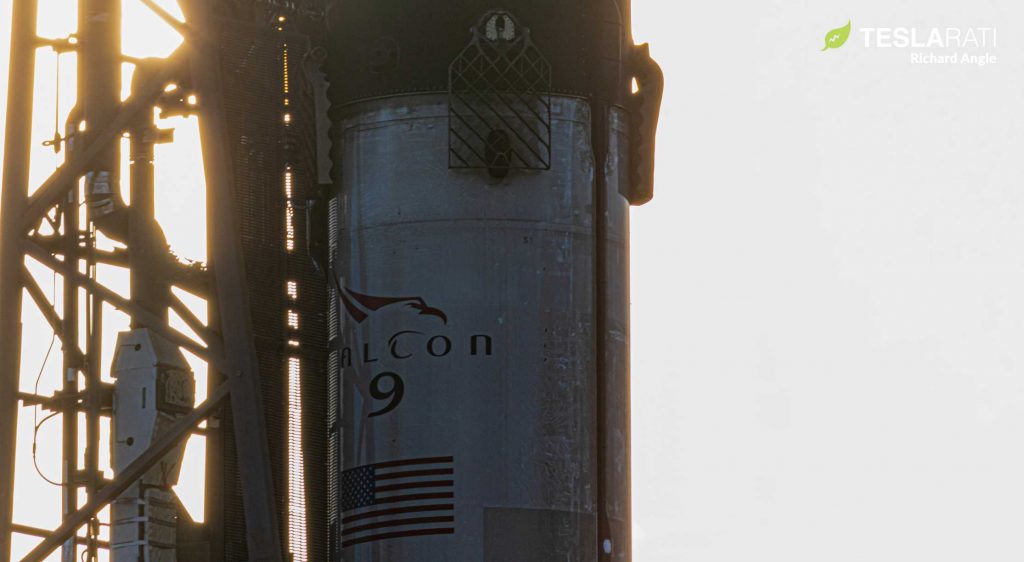
If the floating landing pad is at the peak or trough of large swells when Falcon 9 is scheduled to land, there is a good chance that the rocket could either hit the deck too hard or cut off its engines before landing, falling a distance equivalent to the height of the swell onto the drone ship. Either scenario would pose a serious risk of damaging or even outright destroying a landing Falcon booster, cutting short any future prospects of reuse.
Most recently, SpaceX performed Crew Dragon’s second-ever launch on a Falcon 9 rocket, intentionally triggering an in-flight abort (IFA) some 90 seconds after launch to test the spacecraft’s ability to keep astronauts safe in even a near-worst-case scenario. That particular launch was also delayed a number of days by high seas in the region the spacecraft was expected to splash down in, conditions that would have severely hampered critical recovery work.
Now a little over a week after Crew Dragon’s successful January 20th Falcon 9 launch, SpaceX’s third launch of the year has been delayed repeatedly by both weather in the recovery area and weather at the launch pad. Originally expected to launch as early as January 20th, a slight Crew Dragon launch delay pushed it to the 21st, where it was then delayed again by high seas to January 24th, and a third time to January 27th. On January 27th, SpaceX got just 40 minutes away from liftoff before it scrubbed the attempt due to high upper-level winds above the launch pad.
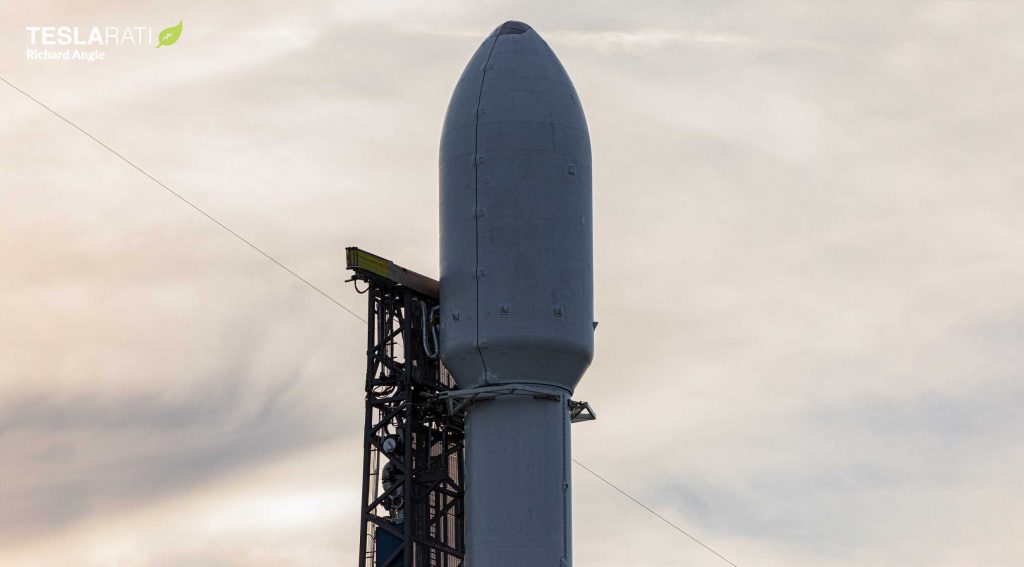
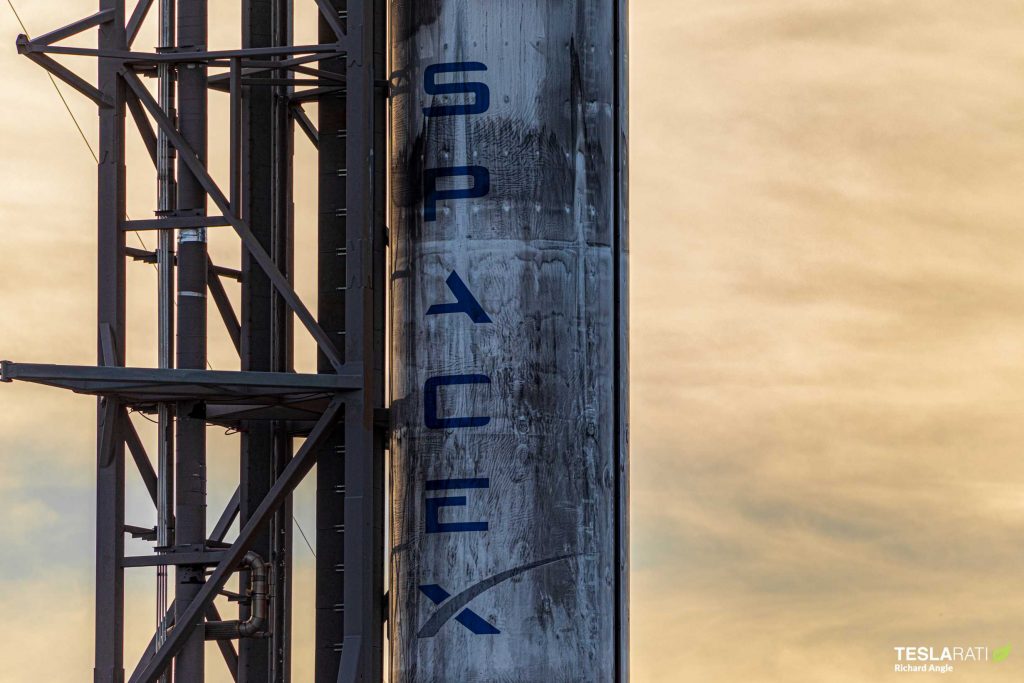
Finally, on January 28th, SpaceX announced that bad weather in the recovery area had forced it to skip a backup window scheduled later that day, slipping another 24 hours to 9:09 am EST on January 29th. With any luck, this will be the last in an unusually long series of weather-related delays for the Starlink mission. Aside from Falcon 9 B1051’s third launch and (hopefully) landing, Starlink V1 L3 will also mark the second time ever that twin Falcon fairing recovery ships Ms. Tree and Ms. Chief will attempt to simultaneously catch both halves of a payload fairing — more than worth the wait.
Tune in to SpaceX’s official webcast around 8:55 am EST (13:55 UTC) tomorrow (Wednesday, Jan 29) to watch the company’s third launch of 2020 live.
Check out Teslarati’s Marketplace! We offer Tesla accessories, including for the Tesla Cybertruck and Tesla Model 3.

News
Tesla FSD fleet is nearing 7 billion total miles, including 2.5 billion city miles
As can be seen on Tesla’s official FSD webpage, vehicles equipped with the system have now navigated over 6.99 billion miles.

Tesla’s Full Self-Driving (Supervised) fleet is closing in on almost 7 billion total miles driven, as per data posted by the company on its official FSD webpage.
These figures hint at the massive scale of data fueling Tesla’s rapid FSD improvements, which have been quite notable as of late.
FSD mileage milestones
As can be seen on Tesla’s official FSD webpage, vehicles equipped with the system have now navigated over 6.99 billion miles. Tesla owner and avid FSD tester Whole Mars Catalog also shared a screenshot indicating that from the nearly 7 billion miles traveled by the FSD fleet, more than 2.5 billion miles were driven inside cities.
City miles are particularly valuable for complex urban scenarios like unprotected turns, pedestrian interactions, and traffic lights. This is also the difference-maker for FSD, as only complex solutions, such as Waymo’s self-driving taxis, operate similarly on inner-city streets. And even then, incidents such as the San Francisco blackouts have proven challenging for sensor-rich vehicles like Waymos.
Tesla’s data edge
Tesla has a number of advantages in the autonomous vehicle sector, one of which is the size of its fleet and the number of vehicles training FSD on real-world roads. Tesla’s nearly 7 billion FSD miles then allow the company to roll out updates that make its vehicles behave like they are being driven by experienced drivers, even if they are operating on their own.
So notable are Tesla’s improvements to FSD that NVIDIA Director of Robotics Jim Fan, after experiencing FSD v14, noted that the system is the first AI that passes what he described as a “Physical Turing Test.”
“Despite knowing exactly how robot learning works, I still find it magical watching the steering wheel turn by itself. First it feels surreal, next it becomes routine. Then, like the smartphone, taking it away actively hurts. This is how humanity gets rewired and glued to god-like technologies,” Fan wrote in a post on X.
News
Tesla starts showing how FSD will change lives in Europe
Local officials tested the system on narrow country roads and were impressed by FSD’s smooth, human-like driving, with some calling the service a game-changer for everyday life in areas that are far from urban centers.

Tesla has launched Europe’s first public shuttle service using Full Self-Driving (Supervised) in the rural Eifelkreis Bitburg-Prüm region of Germany, demonstrating how the technology can restore independence and mobility for people who struggle with limited transport options.
Local officials tested the system on narrow country roads and were impressed by FSD’s smooth, human-like driving, with some calling the service a game-changer for everyday life in areas that are far from urban centers.
Officials see real impact on rural residents
Arzfeld Mayor Johannes Kuhl and District Administrator Andreas Kruppert personally tested the Tesla shuttle service. This allowed them to see just how well FSD navigated winding lanes and rural roads confidently. Kruppert said, “Autonomous driving sounds like science fiction to many, but we simply see here that it works totally well in rural regions too.” Kuhl, for his part, also noted that FSD “feels like a very experienced driver.”
The pilot complements the area’s “Citizen Bus” program, which provides on-demand rides for elderly residents who can no longer drive themselves. Tesla Europe shared a video of a demonstration of the service, highlighting how FSD gives people their freedom back, even in places where public transport is not as prevalent.
What the Ministry for Economic Affairs and Transport says
Rhineland-Palatinate’s Minister Daniela Schmitt supported the project, praising the collaboration that made this “first of its kind in Europe” possible. As per the ministry, the rural rollout for the service shows FSD’s potential beyond major cities, and it delivers tangible benefits like grocery runs, doctor visits, and social connections for isolated residents.
“Reliable and flexible mobility is especially vital in rural areas. With the launch of a shuttle service using self-driving vehicles (FSD supervised) by Tesla in the Eifelkreis Bitburg-Prüm, an innovative pilot project is now getting underway that complements local community bus services. It is the first project of its kind in Europe.
“The result is a real gain for rural mobility: greater accessibility, more flexibility and tangible benefits for everyday life. A strong signal for innovation, cooperation and future-oriented mobility beyond urban centers,” the ministry wrote in a LinkedIn post.
News
Tesla China quietly posts Robotaxi-related job listing
Tesla China is currently seeking a Low Voltage Electrical Engineer to work on circuit board design for the company’s autonomous vehicles.

Tesla has posted a new job listing in Shanghai explicitly tied to its Robotaxi program, fueling speculation that the company is preparing to launch its dedicated autonomous ride-hailing service in China.
As noted in the listing, Tesla China is currently seeking a Low Voltage Electrical Engineer to work on circuit board design for the company’s autonomous vehicles.
Robotaxi-specific role
The listing, which was shared on social media platform X by industry watcher @tslaming, suggested that Tesla China is looking to fill the role urgently. The job listing itself specifically mentions that the person hired for the role will be working on the Low Voltage Hardware team, which would design the circuit boards that would serve as the nervous system of the Robotaxi.
Key tasks for the role, as indicated in the job listing, include collaboration with PCB layout, firmware, mechanical, program management, and validation teams, among other responsibilities. The role is based in Shanghai.
China Robotaxi launch
China represents a massive potential market for robotaxis, with its dense urban centers and supportive policies in select cities. Tesla has limited permission to roll out FSD in the country, though despite this, its vehicles have been hailed as among the best in the market when it comes to autonomous features. So far, at least, it appears that China supports Tesla’s FSD and Robotaxi rollout.
This was hinted at in November, when Tesla brought the Cybercab to the 8th China International Import Expo (CIIE) in Shanghai, marking the first time that the autonomous two-seater was brought to the Asia-Pacific region. The vehicle, despite not having a release date in China, received a significant amount of interest among the event’s attendees.








